What's New
Displaying results 281 - 290 of 4052
Resource | Presentations,
Get an overview of the HIV/AIDS situation in Pakistan. Browse and view charts and graphs illustrating data on the country's basic socio-demographic indicators, HIV prevalence and epidemiology, risk behaviors, vulnerability and HIV knowledge, HIV expenditures, and national response.
Resource | Presentations,
Get an overview of the HIV/AIDS situation in Papua New Guinea. Browse and view charts and graphs illustrating data on the country's basic socio-demographic indicators, HIV prevalence and epidemiology, risk behaviors, vulnerability and HIV knowledge, HIV expenditures, and national response.
Resource | Presentations,
Get an overview of the HIV/AIDS situation in Singapore. Browse and view charts and graphs illustrating data on the country's basic socio-demographic indicators, HIV prevalence and epidemiology, risk behaviors, vulnerability and HIV knowledge, HIV expenditures, and national response.
Resource | Presentations,
Get an overview of the HIV/AIDS situation in Thailand. Browse and view charts and graphs illustrating data on the country's basic socio-demographic indicators, HIV prevalence and epidemiology, risk behaviors, vulnerability and HIV knowledge, HIV expenditures, and national response.
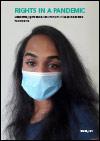
Resource | Publications,
Rights in a Pandemic outlines 10 immediate areas for action for governments towards building effective, rights-based COVID-19 responses. These include taking proactive measures to ensure that people, particularly people in vulnerable groups, can access HIV treatment and prevention services, designating and supporting essential workers, including community-led organizations, and implementing measures to prevent and address gender-based violence. The report builds on Rights in the time of COVID-19, released by UNAIDS in March 2020, which urged countries to take a human rights approach in responding to COVID-19, in line with best practices from 40 years of responding to HIV.
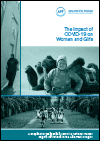
Resource | Publications,
The snapshot does not intend to be an analysis of issues for women and girls relating to COVID-19. Rather it is an account of the responses of courageous human rights workers from nine national human rights institutions in the Asia Pacific Region, who have highlighted some of the issues that women and girls are facing in their countries and how they, and their institutions, are responding to these issues. It is hoped that, by sharing these case studies, the challenges, tools and strategies for responding to, and supporting recovery from COVID-19, may also be shared.
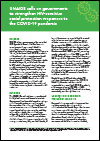
Resource | Publications,
UNAIDS calls on governments to live up to their commitment to develop nationally owned and led social protection systems for all, including floors; and scale up and progressively enhance coverage, adequacy and comprehensiveness, thereby improving the responsiveness and quality of interventions to address the needs and vulnerabilities of people living with HIV.
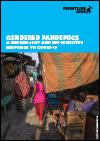
Resource | Publications,
This brief explores how the gender dimensions of COVID-19 overlap with and undermine HIV prevention, treatment and care. It outlines what actions are needed to ensure that the responses to COVID-19 are gender-just – that is, promoting gender equity and equal rights for all – and HIV-sensitive: responsive to the priorities of communities most affected by HIV.
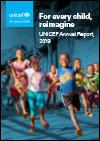
Resource | Publications,
UNICEF is releasing our Annual Report 2019 against the backdrop of the COVID-19 pandemic.
The pandemic represents a shared global struggle against an invisible enemy. Not only are children and young people contracting COVID-19, they are also among its most severely impacted victims. Unless we address the pandemic’s impacts on children, the echoes of COVID-19 will permanently damage our shared future.
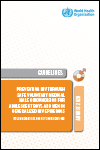
Resource | Guidelines,
Since 2007 the World Health Organization (WHO) and the Joint United Nations Programme on HIV/AIDS (UNAIDS) have recommended voluntary medical male circumcision (VMMC) as an important strategy for the prevention of heterosexually acquired HIV in men in settings where the prevalence of heterosexually transmitted HIV is high. Over 25 million men and adolescent boys in East and Southern Africa have been reached with VMMC services.
These new guidelines update earlier WHO recommendations to maximize the HIV prevention impact of safe VMMC services and aim to guide the transition to the sustained provision of interventions with a focus on the health and well-being of both adolescent boys and men.





